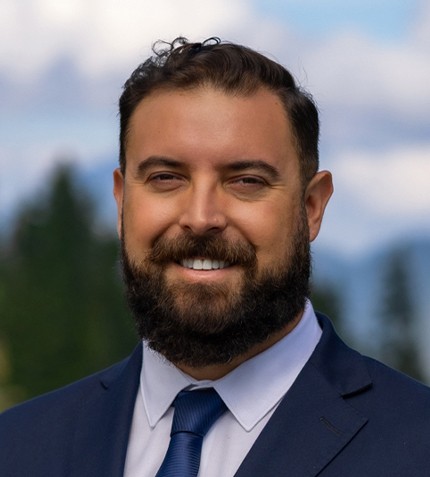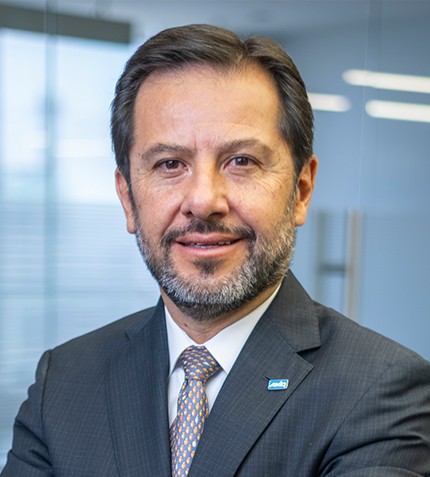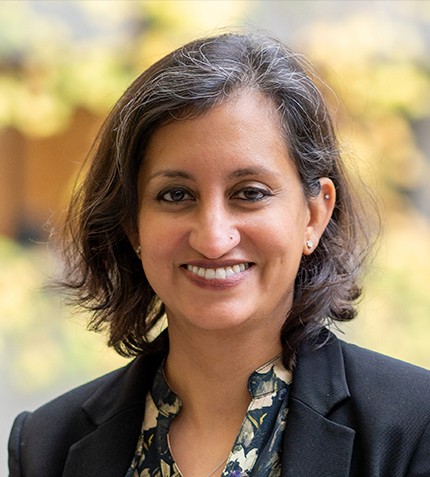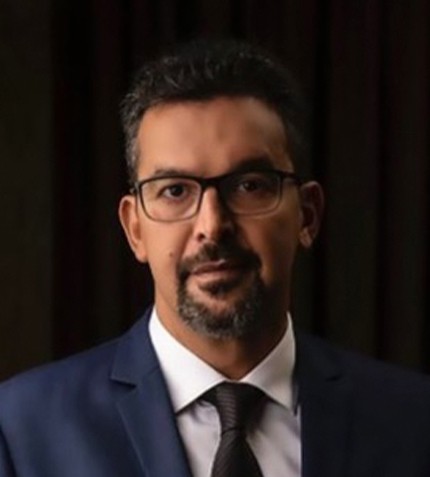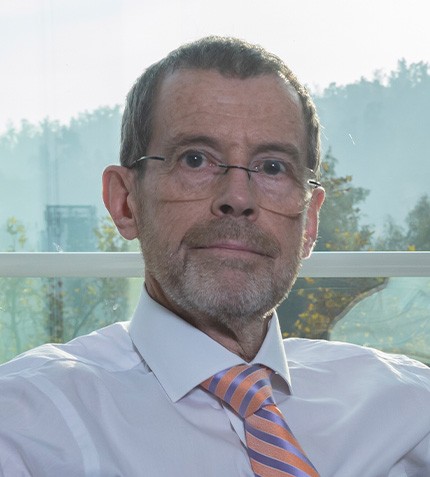
"I believe Caserones is a great learning school for medium-sized mines and serves as an example of how technologies and best practices can be implemented to make a challenging project successful and profitable."
Gonzalo Araujo Alonso
COO, SCM MINERA LUMINA COPPER CHILE (MLCC)
Can you provide an overview of SCM Minera Lumina Copper Chile’s (MLCC) Caserones mine?
Caserones is an open pit mine located 162 km to the southeast of Copiapó at an average altitude of 4,300 m above sea level. We have two lines of production – a concentrator where we process sulfides to generate copper and molybdenum concentrate; and a dump leach operation where run of mine material is leached, and through an SX-EW process we produce high-grade copper cathodes. In 2022, MLCC expects to produce a total of 150,000 tons of copper, mostly in concentrate with approximately 20,000 tons of cathodes.
I believe Caserones is a great learning school for medium-sized mines and serves as an example of how technologies and best practices can be implemented to make a challenging project successful and profitable.
What have been the main milestones achieved and the main challenges faced in the last two years from an operational standpoint?
In previous years, MLCC saw significant improvements in its production profile, with 2019 being our best production year ever. However, this curve of increased production, stability, and reliability of our operations changed with the onset of the pandemic when we moved into an organizational adjustment strategy to mitigate challenges. We implemented several measures and changes in our operations with the purpose of maintaining production and preventing the pandemic having an impact on the health of our workers. We were quite successful in our strategy, but our production improvement curve was delayed. We are now at a stage where we are moving back towards more normal conditions and are again in the process of increasing reliability and production. We have had great results over the last three quarters and expect to continue on this trend moving forward.
What potential does the company see to expand the operation?
MLCC does not have expansion plans in terms of new lines of production or increasing the capacity of the concentrator. We have, however, been doing exploration campaigns every two or three years, mostly around the current pit, and expect that we can increase life of mine by a few more years, particularly because of the current high copper prices allowing for lower grade materials to be included in the mine plan. High copper prices are also stimulating investments into technologies to improve our operation, such as automation and remote operation, which normally do not pay off with a short life of mine. Our current mine plan runs to 2037.
Lumina Copper was previously ordered to rectify environmental damages by Chile’s environmental regulator, the SMA. How has this been resolved?
In 2019, the SMA filed 18 charges against MLCC, of which 16 did not include the concept of environmental damages. These 16 charges are being addressed through a compliance program which was agreed on in early 2021. Thus far, we have achieved all the targets and have 100% compliance to all the commitments of the plan. The program includes a strong monitoring system for water quality – delivering desalinated water at the Malpaso channel in Tierra Amarilla and at the city of Caldera to counter the deficit with the farmers and communities in the region; and also an environmental impact study to regularize the infiltration control system in one of our tailings deposits.
There are two charges where the SMA considers we caused environmental damage. We do not agree with these charges and believe that what happened was just a very limited increase in sulfide in the acquifer within our property over a distance of a couple of km in an acquifer which is over 50 km long. We filed our discharge and depending on the SMA’s decision we will evaluate what to do next.
What is MLCC’s approach to hiring, training, and developing local talent for its workforce?
Attracting a workforce has been a complex situation as we are located in a farmers’ valley with only one major mine established in the area before us. Today, we have a local workforce of approximately 33%, which is the result of an effort we carried out together with our contractors. Our Atacama Labor Integration Program, PILA, seeks to train and hire people without mining experience from the Province of Copiapó, particularly Tierra Amarilla, into our operations. Currently we have 51 workers coming from this program in our mine. We also provide training to improve local employability and where it is not possible to employ people on site, we aim to stimulate entrepreneurship and promote local suppliers.




